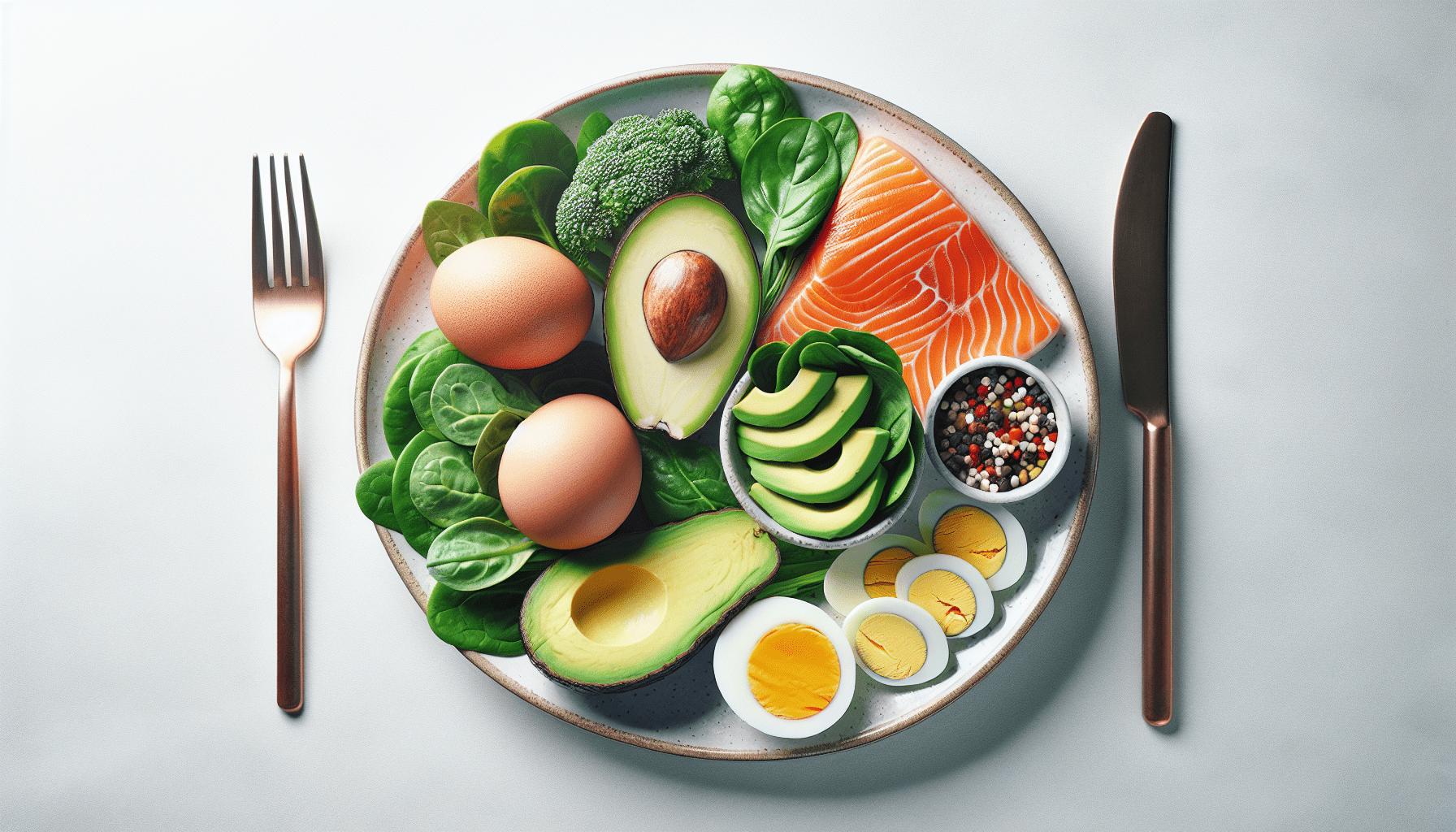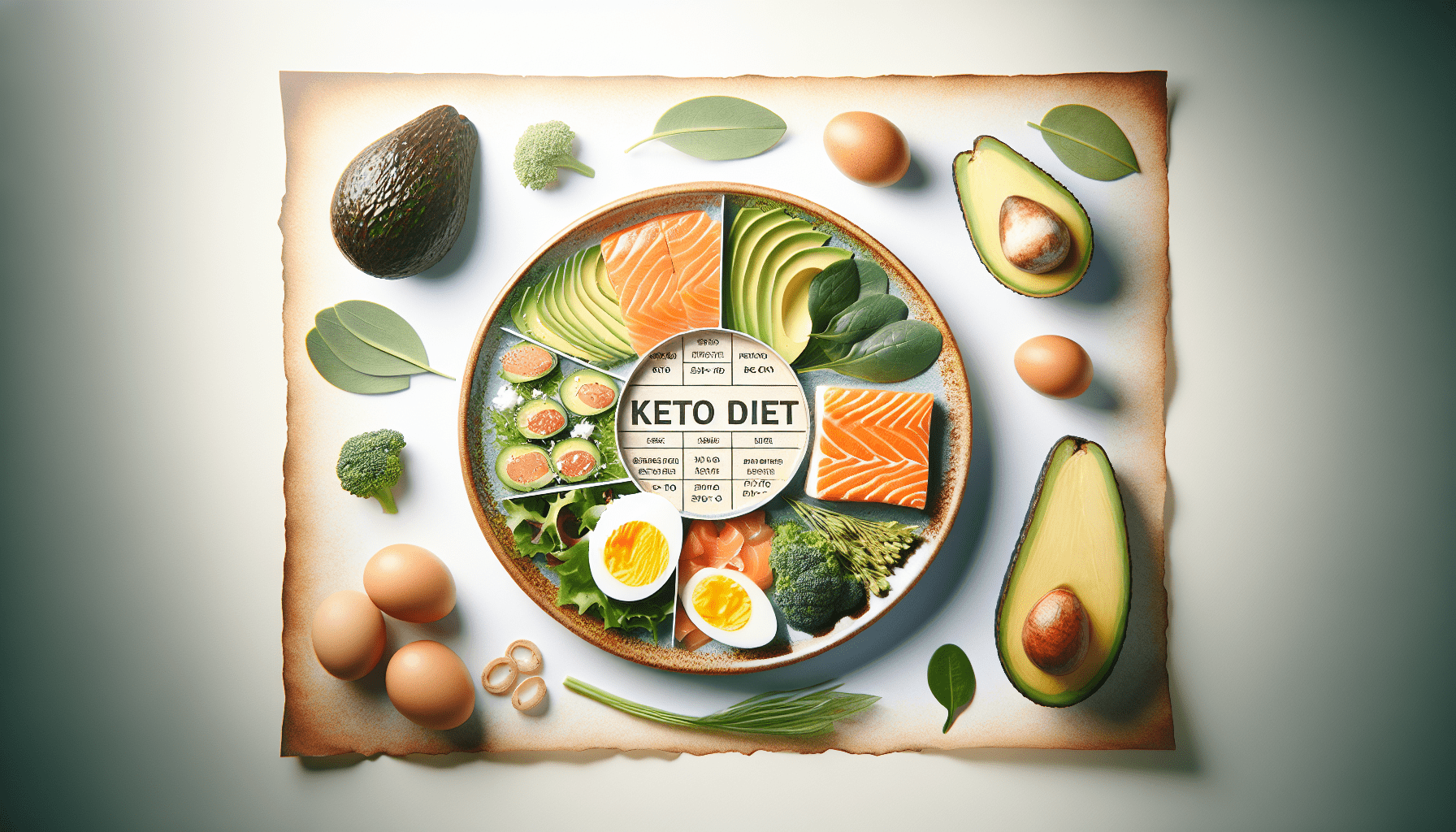Ever found yourself wondering how you can boost your energy while simultaneously burning fat efficiently? Let’s talk about the ketogenic diet and how a few basic rules can make it an effective strategy for achieving your wellness goals. Written with an approachable and informative tone, this article will guide you through the essential rules of a keto diet.

Understanding the Keto Diet
The ketogenic diet, or keto for short, has gained immense popularity because it promises to increase energy levels and facilitate fat loss more effectively than many other diets. It’s a low-carb, high-fat eating plan that changes the way your body converts food into energy. Instead of relying on glucose from carbohydrates, your body switches to burning fat for fuel, producing ketones in the process.
What is Ketosis?
First things first, you need to understand ketosis. This metabolic state occurs when your body starts burning fat instead of carbs for energy. It produces ketones, small molecules that the body can use for fuel, particularly when glucose is in short supply. To achieve ketosis, you must significantly reduce your carbohydrate intake and replace it with healthy fats.
Basic Rules of a Keto Diet
Now that you have a grasp on what the keto diet aims to do, let’s break down the basic rules you’ll need to follow to get it right.
Rule 1: Low Carbs, High Fat
One of the most critical rules of a keto diet is to minimize carbs and prioritize fats. Typically, your daily intake should consist of:
- Carbohydrates: 5-10% (around 20-50 grams per day)
- Proteins: 20-25%
- Fats: 70-75%
This ratio helps ensure that your body remains in ketosis, making fat your primary energy source.
Rule 2: Quality Over Quantity
Just because you’re eating fats doesn’t mean you should be reaching for the nearest donut. Quality is paramount.
Example of Healthy Fats:
- Avocado
- Olive oil
- Coconut oil
- Butter
- Fatty fish (like salmon)
Avoid trans fats and overly processed foods to make the most out of your keto diet.
Rule 3: Moderate Protein Consumption
While protein is essential for muscle repair and other bodily functions, consuming excessive amounts can kick you out of ketosis. Aim to consume moderate amounts, focusing on high-quality sources like:
- Eggs
- Poultry
- Beef
- Fish
Rule 4: Stay Hydrated
Hydration is key in any diet, but it’s particularly crucial in a keto diet because carbohydrate restriction can lead to water loss. Drink plenty of water to stay hydrated, and consider incorporating electrolytes if you’re losing a lot of fluids through exercise or sweating.
Supplements to Consider
Keto supplements can give you that extra edge, enhancing energy levels and optimizing the fat-burning process. Here are some you might find useful:
| Supplement | Benefit | Source |
|---|---|---|
| MCT Oil | Quick energy source, aids ketosis | Coconut oil |
| Exogenous Ketones | Supports ketosis, boosts energy | Supplements |
| Electrolytes | Prevents dehydration, reduces cramps | Magnesium, potassium, sodium |
| Omega-3s | Anti-inflammatory, supports heart health | Fish oil, flaxseeds |
MCT Oil
Medium-Chain Triglycerides (MCTs) are fats that are more easily absorbed and converted into ketones, providing a quick energy source for your body and brain. They’re found naturally in coconut oil but can also be taken as a concentrated supplement.
Exogenous Ketones
These supplements contain ketones and can help your body enter ketosis faster. They can be particularly useful when you’re just starting the diet or after a carb-heavy meal that might knock you out of ketosis.
Electrolytes
Because a keto diet leads to water loss, it also results in the loss of electrolytes. Supplementing with magnesium, potassium, and sodium will help you maintain balance and avoid symptoms like muscle cramps and fatigue.
Omega-3 Fatty Acids
Omega-3s from fish oil or flaxseeds offer anti-inflammatory benefits and support cardiovascular health, crucial in a diet high in fats.
Foods to Eat and Avoid
Knowing what to eat and what to skip can make or break your keto journey. Here’s a simplified guide to steer you in the right direction.
Foods to Eat
| Category | Foods to Include |
|---|---|
| Proteins | Beef, chicken, turkey, lamb, eggs |
| Fats | Avocado, olive oil, butter, coconut oil |
| Vegetables | Spinach, kale, broccoli, cauliflower |
| Dairy | Cheese, cream, Greek yogurt |
| Nuts & Seeds | Almonds, walnuts, chia seeds, flax seeds |
Foods to Avoid
| Category | Foods to Exclude |
|---|---|
| Carbohydrates | Bread, pasta, rice, cereals |
| Sugary Foods | Cookies, candies, soft drinks |
| Starchy Vegetables | Potatoes, sweet corn, peas |
| Processed Foods | Processed meats, pre-packaged meals |
| Fruit | Apples, bananas, oranges (high-carb fruits) |
Easy Swap Examples
If you love rice and pasta, don’t worry. You can swap them for cauliflower rice or zucchini noodles. Craving something sweet? Opt for keto-friendly desserts using almond flour and natural sweeteners like stevia.

Benefits of a Keto Diet
The ketogenic diet isn’t just a fad; it offers numerous benefits beyond just weight loss. Let’s explore some of these advantages.
Increased Energy Levels
Because your body efficiently burns fat for fuel, many people report sustained energy levels throughout the day. No more mid-afternoon crashes!
Improved Mental Clarity
Ketones are a fantastic source of fuel for the brain. Many people on a keto diet notice improved focus and mental clarity, finding it easier to concentrate on tasks.
Better Blood Sugar Control
Since the keto diet reduces carbohydrate intake, it can help stabilize blood sugar levels, making it an excellent diet plan for people with insulin resistance or Type 2 diabetes.
Satiety and Reduced Cravings
Eating fats and proteins can help you feel fuller for longer, which means you’re less likely to snack between meals. Reduced hunger and fewer cravings can make it easier to stick to your dietary goals.
Potential Drawbacks and How to Overcome Them
No diet is without its challenges, and keto is no exception. However, knowing the potential pitfalls can help you navigate them successfully.
Keto Flu
When you start the keto diet, you may experience flu-like symptoms known as “keto flu.” This phase includes headaches, fatigue, dizziness, and irritability as your body adapts to burning fat for energy.
How to Mitigate Keto Flu:
- Stay hydrated
- Take electrolyte supplements
- Gradually reduce your carb intake instead of going cold turkey
Digestive Issues
Some people experience constipation or diarrhea when they begin a keto diet. Increasing your intake of high-fiber, low-carb vegetables can help regulate your digestive system.
Nutrient Deficiencies
If not well-planned, a keto diet could lead to nutrient deficiencies. Incorporate a variety of foods or consult a nutritionist to ensure you’re getting all the essential vitamins and minerals.
Practical Tips for Success
Sticking to a keto diet might feel daunting at first, but these practical tips can set you up for success.
Meal Planning
Planning your meals in advance can save you time and prevent last-minute temptations. It also ensures you have the right ingredients on hand to stick to your diet seamlessly.
Reading Labels
Many products have hidden carbs or sugars. Get into the habit of reading labels to ensure that what you’re consuming aligns with your keto goals.
Join a Community
Being part of a supportive community can make your journey easier. Whether it’s an online forum, a social media group, or friends following the same diet, having a support system can provide invaluable encouragement and advice.
Stay Flexible
The primary objective is to stay in ketosis, but don’t be too rigid. If you slip up, it’s not the end of the world. Learn from it and get back on track.
Myths about the Keto Diet
There are several misconceptions about the keto diet that may discourage you or lead you astray. Let’s debunk a few of them.
Myth 1: Keto is Just Another Low-Carb Diet
While the keto diet is low in carbs, the focus is on achieving ketosis. Typical low-carb diets do not emphasize the high-fat component or the necessity of being in a metabolic state where fat is the primary fuel source.
Myth 2: You Can Never Eat Carbs Again
A common misconception is that you must avoid carbs forever. While you’ll need to limit them to maintain ketosis, some occasions may allow for a higher intake. Once you reach your goals, you can also explore carb cycling to reintroduce carbs at specific intervals.
Myth 3: All Fats are Good
The keto diet emphasizes healthy fats. Just because fats are encouraged doesn’t mean you should consume unhealthy fats. Stick to natural sources and avoid processed, trans fats.
Myth 4: It’s a Quick Fix
The keto diet isn’t a magic solution for rapid weight loss. Like any other diet, it requires commitment and consistency to see long-term results. It’s a lifestyle change rather than a temporary diet.
FAQs on Keto Diet
Many questions come up when considering a keto diet. Let’s address some of the most common ones.
Can I do keto if I’m a vegetarian?
Absolutely! You can consume plant-based fats like avocados, nuts, and seeds, and proteins like tofu, tempeh, and certain legumes in moderation.
How long should I stay on the keto diet?
The duration depends on your personal goals and how you feel. Some follow the diet long-term, while others might use it cyclically, returning to lower-carb eating once they achieve their goals.
What if I have high cholesterol?
While some people may see an increase in LDL cholesterol, many experience a rise in HDL (good) cholesterol and a drop in triglycerides. It’s crucial to monitor your levels and consult a healthcare professional.
Can I exercise on a keto diet?
Definitely! While your body adjusts, you might find high-intensity workouts challenging, but once adapted, many find sustained energy for both endurance and strength training.
Conclusion
Embarking on a keto diet can be a transformative journey for your energy levels and overall health. By understanding the basic rules and adhering to them, you can maximize the benefits while minimizing potential drawbacks. Remember, like any lifestyle change, the key lies in consistency and making informed decisions. So, are you ready to take the plunge into the world of ketosis and see how it can boost your energy and burn fat efficiently?





